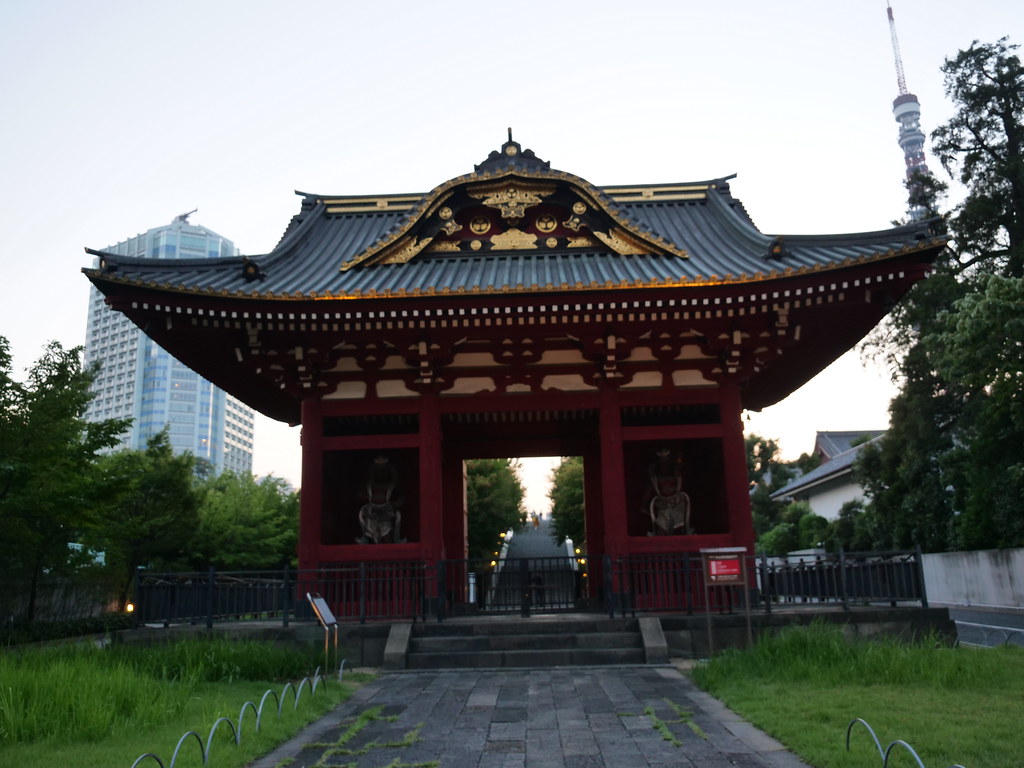
Zojoji Temple, located in Shiba Park, Minato Ward, Tokyo, is a Buddhist temple of the Jodo sect. Its mountain name is San’en-zan, and its official name is San’en-zan Kōtoku-in Zojoji. As one of the most important historic temples in Japanese Buddhism, Zojoji is not only rich in history but also closely tied to the Tokugawa shogunate, serving as the Tokugawa family temple and holding significant historical and cultural value.
The origins of Zojoji can be traced back to the 9th century, when it is said that Shuei, a disciple of Kobo Daishi Kukai, founded Komyoji Temple in Kaizuka, Musashi Province (present-day Chiyoda Ward, Tokyo). By 1393 during the Muromachi period, under the guidance of the 8th patriarch Yuuyo Shoso, the temple converted from the Shingon sect to the Jodo sect and was renamed “Zojoji,” marking the beginning of a new chapter as a Jodo temple. Yuuyo Shoso is considered the temple’s true founding patriarch, and many of his disciples were connected to the Matsudaira clan, laying the foundation for Zojoji’s later association with the Tokugawa family.
In 1590 (Tensho 18), when Tokugawa Ieyasu entered Edo, he visited Zojoji and met the 12th chief abbot, Genyo Soin. It is said that Ieyasu was deeply impressed by the temple and designated it as the Tokugawa family temple. With the expansion of Edo Castle, Zojoji was relocated from Hibiya to its present site in Shiba. According to feng shui principles, Zojoji was placed in Edo’s ura-kimon (southwest “demon gate”) direction, complementing Kaneiji Temple in the kimon (northeast) direction, together forming a protective spiritual balance for the city.
During the Edo period, Zojoji grew into the center of the Jodo sect and established a scholarly seminary known as danrin, becoming the foremost of the Kanto region’s 18 seminaries. It was a crucial hub for Buddhist scholarship and education. At its height, Zojoji boasted a grand scale with numerous halls and a five-story pagoda. Its magnificent temple complex, along with the Tokugawa ancestral mausoleums, stood as symbols of both religion and power.
However, in modern times, Zojoji suffered repeated calamities. During the Meiji era, with the separation of Shinto and Buddhism and political reforms, its scale was reduced, and much of its land became public property, now part of Shiba Park. The 1923 Great Kanto Earthquake and the 1945 Tokyo air raids inflicted devastating damage, destroying many important structures, including the Tokugawa mausoleums and the five-story pagoda. Nevertheless, Zojoji has preserved important buildings such as its Main Hall and Sanmon gate, undergoing several reconstructions and restorations.
Of special note is the Sanmon gate, also known as the “Sangedatsumon” (Gate of the Three Liberations), which survives from the early Edo period. Its imposing architecture holds great cultural significance. In 2022, the temple opened nighttime access to the upper level of the gate for the first time, attracting widespread attention. Furthermore, in July 2025, UNESCO officially inscribed three sets of Buddhist scriptures housed at Zojoji into the Memory of the World Register.
In recent years, Zojoji has also served as a venue for major modern ceremonies and events. Notably, in 2022, the state funeral of former Prime Minister Shinzo Abe was held here, drawing worldwide attention once again. Together with the nearby Tokyo Tower and Shiba Park, Zojoji forms a unique urban landscape where history and modernity coexist. It remains not only a sacred religious site but also a popular destination for visitors seeking to experience Edo-period culture and history.
